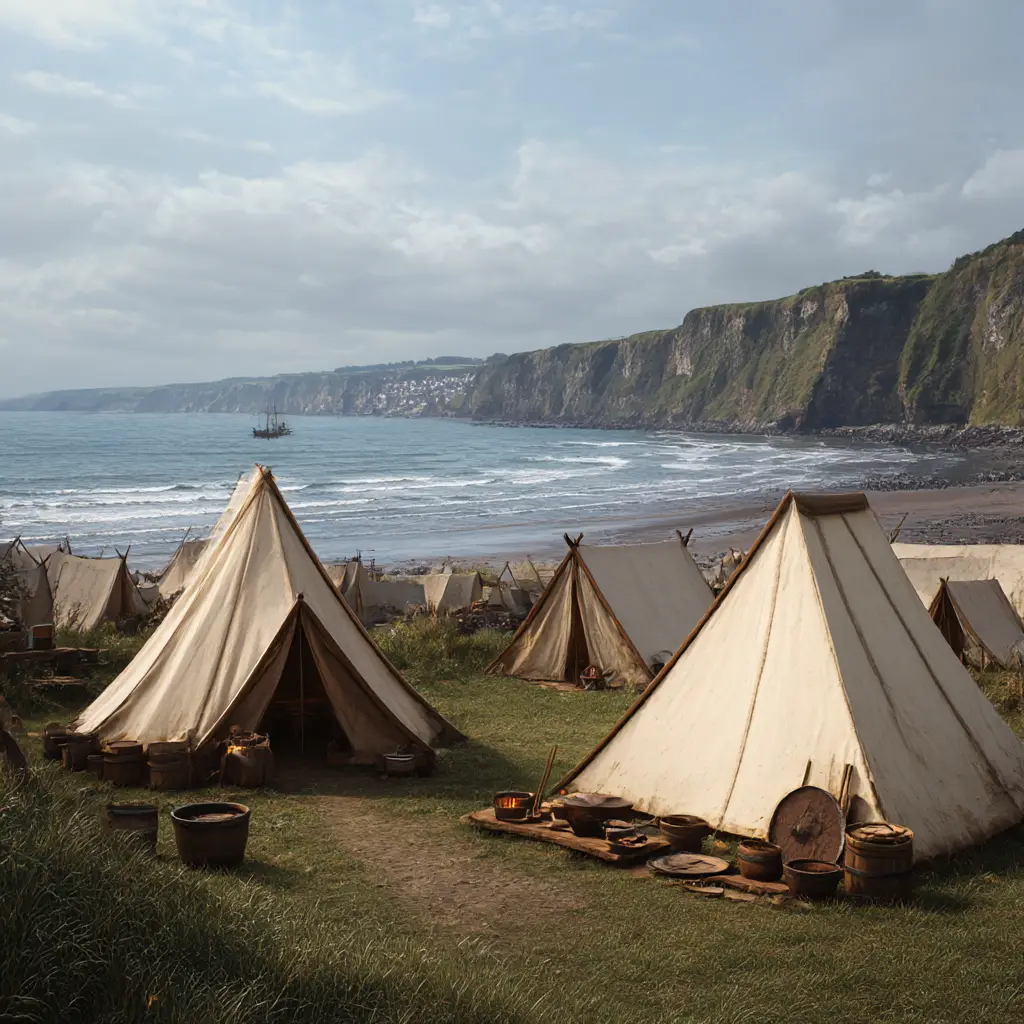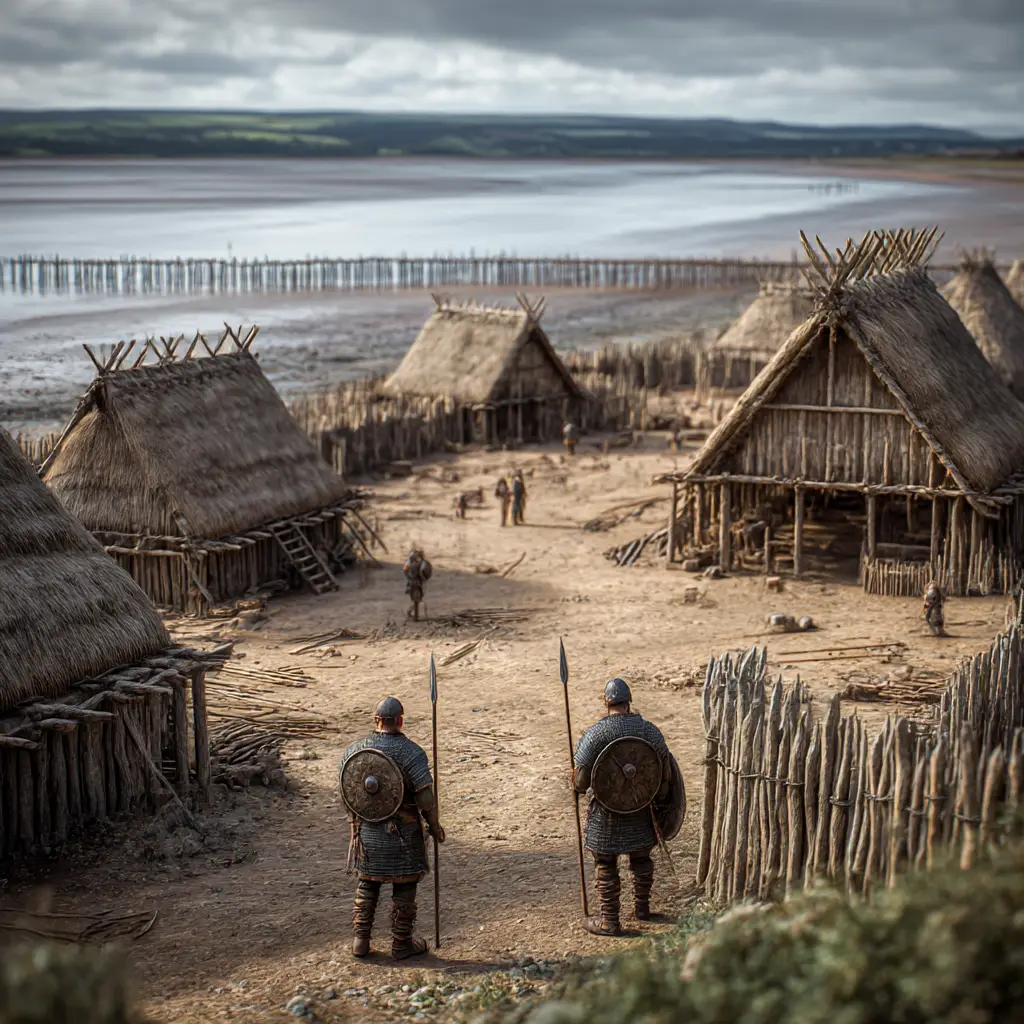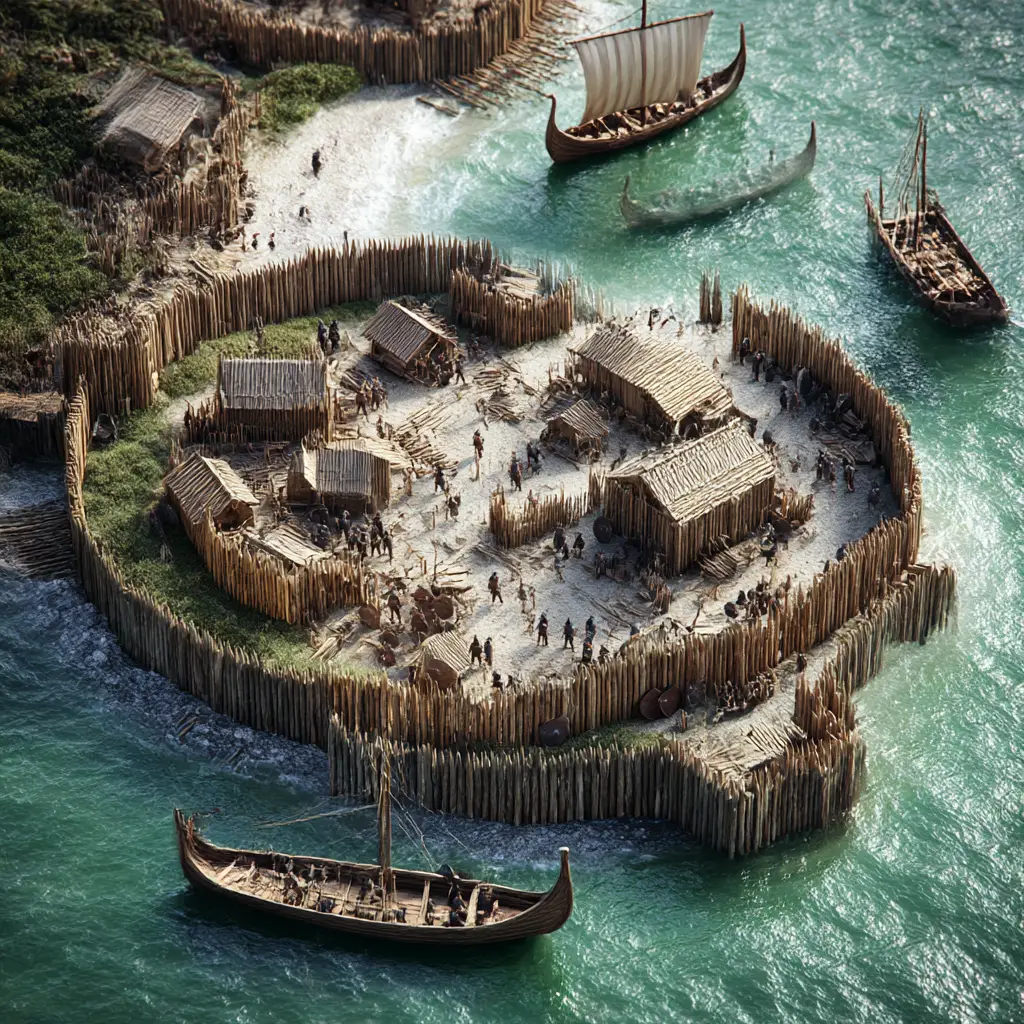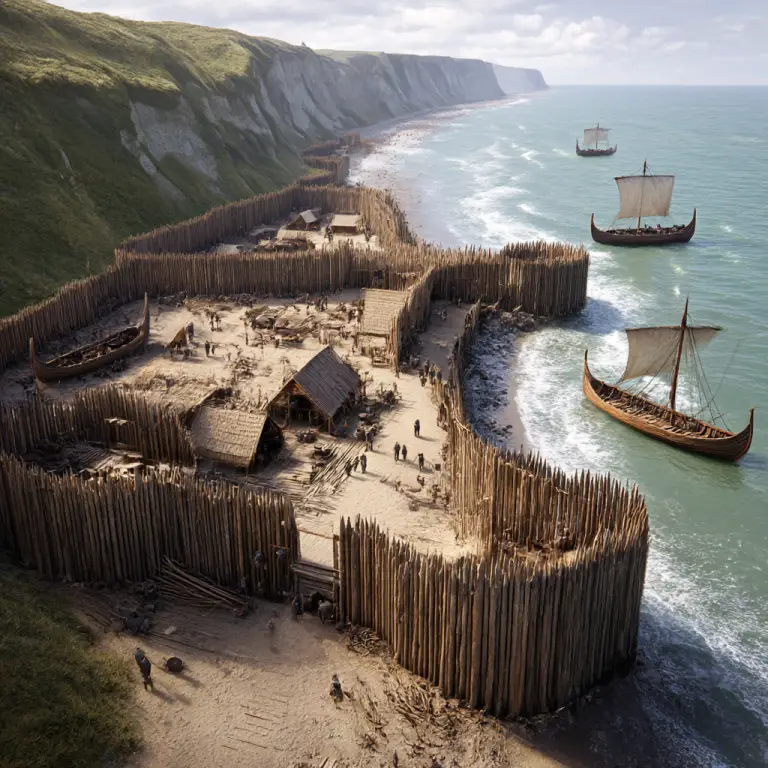The site at Woodstown, near Waterford City in Ireland, holds one of the most significant Viking Age discoveries in the country. Unearthed during roadworks in 2003, archaeologists revealed an extensive settlement dating from around 850 AD. This discovery provided a rare and detailed insight into the early Viking presence in Ireland before the founding of the longphort at Waterford.
The settlement at Woodstown appears to have been a defended base used by Viking raiders and traders operating along the River Suir. Covering approximately 1.5 kilometres, it was far larger than a temporary camp and showed signs of careful planning. Excavations uncovered evidence of houses, workshops, defensive ditches, and paths, suggesting a substantial and organised community.
One of the most remarkable finds at Woodstown was a warrior’s grave, richly furnished with weapons including a sword, spearhead, shield, and a decorated axe. The grave goods, combined with other artefacts such as silver, scales for weighing precious metals, and tools, reveal that this was a settlement tied not only to raiding but also to trade and craftsmanship. The presence of weights and balances points to a thriving economy based on silver bullion exchange, which was common across Viking Age Europe.
The discovery at Woodstown has reshaped historians’ understanding of the Vikings in Ireland. Prior to this, it was thought that Viking towns only developed after the mid ninth century. The evidence from Woodstown shows that the Norse had established a strong base on the River Suir decades before the official founding of Waterford around 914 AD. It is possible that Woodstown functioned as an earlier longphort that eventually gave way to the permanent town.
The importance of the Woodstown site lies not only in the artefacts recovered but also in what it tells us about Viking life in Ireland. It demonstrates that the Norse were more than raiders, and that they created lasting settlements, traded widely, and integrated aspects of Irish culture into their own. Today, Woodstown remains a landmark in Irish archaeology, helping to bridge the gap between the raiding expeditions of the early Viking Age and the later emergence of urban centres such as Dublin, Waterford, Wexford, Cork, and Limerick.



